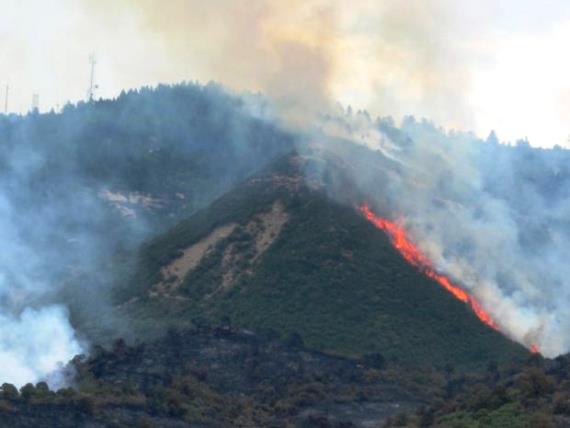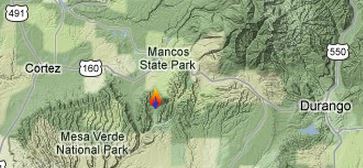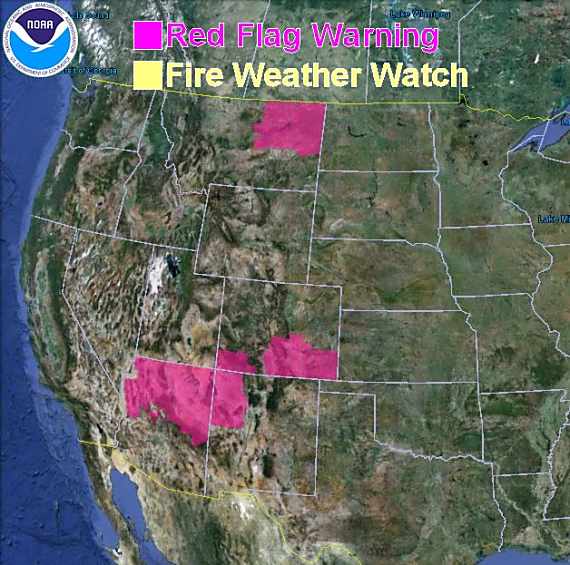Millions of dollars are being sought or spent on mitigating the effects of bark beetle mortality in the name of preventing disastrous wildfires. Sometimes these efforts are a smoke screen by private companies, or those influenced by their lobbyists, who want to reduce regulations and environmental restrictions on cutting timber on federal lands. At other times the public or even firefighters see dead trees and assume that beetle-killed forests will lead to catastrophic fire behavior. While there is not complete agreement, most of the available science and the preponderance of evidence contradict that assumption.
Beetles are a natural part of the environment and have been around as long as forests. The recent surge in their numbers is due to two factors: warmer weather that kills off fewer of them during the winter, and drought in some areas that reduces the vigor of the trees, decreasing their ability to fend off the attacks.
Dr. Dominik Kulakowski conducted research on insect outbreaks and fires in Rocky Mountain forests for fifteen years. During that time he worked as a research scientist at the University of Colorado and now is a professor at Clark University where he continues to pursue this research.
Below is an excerpt from Dr. Kulakowski’s testimony on April 11, 2013 before the Subcommittee on Public Lands and Environmental Regulation of the Committee on Natural Resources of the United States House of Representatives. He was providing information for the committee members to consider when they vote on H.R. 1442, a proposed bill with a strange name, the “Depleting Risk from Insect Infestation, Soil Erosion, and Catastrophic Fire Act of 2013”.
****
“…Another example is that of a major outbreak of spruce beetle in spruce and fir forests in Colorado in the 1940s, following which there was substantial concern about the increased risk of fire. But although over 300 fires occurred in that region in the decades that followed, our research found that the forests affected by beetles were no more likely to have burned than other forests. Furthermore, no major fires occurred in those beetle-affected forests in the years and decades that followed the outbreak despite the abundance of dead trees. The most likely explanation for this lack of large severe fires is that climatic conditions in these forests are a more important factor in determining fire risk than is the presence of dead trees. In fact, it was not until a severe drought in 2002 that a large fire affected these forests. During that year there were many wildfires in Colorado, the majority of which burned forests with no recent history of outbreaks.
During the drought of 2002, wildfires also burned some forests in northern Colorado that were attacked by beetles just prior to 2002. The potential increase of fire risk immediately following bark beetle outbreaks is the subject of active research. During this so-called “red phase” dry red needles persist on recently killed trees. It has been hypothesized that the risk of fire may therefore increase during and immediately after outbreaks of bark beetles. Relatively little research has examined fires during the red phase of outbreaks and more research is necessary. However, our examination of the 2002 fires found that outbreaks that immediately preceded those fires affected neither the extent nor severity of fires, most likely because changes in fuels brought about by outbreaks were overridden by weather conditions and other variables.
To understand these scientific findings, which may seem counter-intuitive, we need to consider that (1) bark beetles affect fuels in several ways and (2) several factors are necessary for the occurrence of wildfires. Recent research indicates that reductions in canopy density following outbreaks are actually more important to fire risk than are increases in dead fuel. In other words, beetle-killed trees rapidly lose their needles and this reduces the amount of potentially flammable material in the forest canopy. In contrast, live trees have dense canopies which are critical to the spread of wildfire. Furthermore, and most importantly, in forests dominated by lodgepole pine and spruce there is generally no shortage of flammable material, even in the absence of beetle outbreaks. These forests are characteristically dense and during droughts the risk of severe wildfire is likely to be high, regardless of outbreaks. In sum, catastrophic fire is not an inevitable outcome of bark beetle outbreaks. Instead climate is so important to fire risk in these forests that the effects of outbreaks appear to have comparatively little or no influence.”
****
Dr. Kulakowski’s complete testimony before the committee.
More information on Wildfire Today about beetles.



